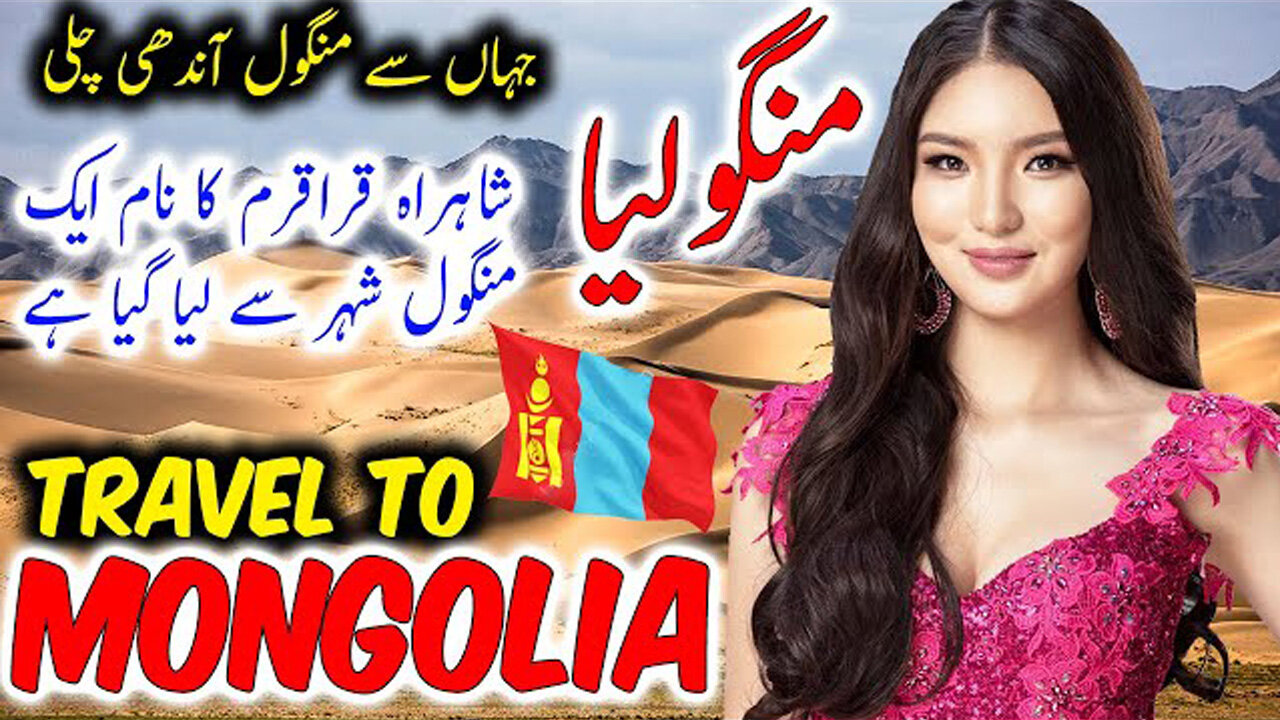Premium Only Content

Travel To Mongolia | Documentary Of Mongolia | History And Facts About Mongolia |منگولیا کی سیر
Ancient Nomadic Culture: Mongolia has a history deeply rooted in nomadic culture, where various tribes roamed the vast steppes for centuries.
Genghis Khan's Legacy: Genghis Khan, born as Temüjin, united the Mongol tribes in the 13th century and established the Great Mongol Empire, becoming one of the most influential figures in world history.
Eurasian Empire: The Great Mongol Empire became the largest contiguous land empire ever, stretching from Asia to Europe, allowing cultural exchange and trade along the Silk Road.
Yuan Dynasty Rule: After Genghis Khan's death, his descendants ruled the Yuan Dynasty in China under Kublai Khan's leadership, contributing to both Mongolian and Chinese history.
Ties with Tibet: Mongolia's historical ties with Tibet led to the adoption of Tibetan Buddhism as a dominant cultural and religious influence in the region.
Chinese and Soviet Control: Mongolia endured periods of Chinese suzerainty and later became a satellite state of the Soviet Union, achieving full independence in 1990.
Democratic Transition: Mongolia transitioned to a democratic system in the early 1990s, marking a significant change in its political landscape.
Mineral Resources: Mongolia's vast mineral resources, including coal, copper, and gold, have driven economic growth and attracted foreign investment in recent years.
Modern Challenges: Despite its rich history, Mongolia faces challenges related to modernization, urbanization, and preserving its unique cultural heritage.
International Relations: Mongolia maintains diplomatic ties with various countries and is known for its policy of "third neighbor" diplomacy to balance relationships with powerful neighbors like Russia and China.
here are five popular places in Mongolia that were often visited by tourists:
Ulaanbaatar: The capital city of Mongolia is a hub of cultural attractions, museums, and historical sites, such as the Gandan Monastery and the National Museum of Mongolia.
Gobi Desert: The Gobi Desert offers a unique and breathtaking landscape with towering sand dunes, flaming cliffs, and unique rock formations like the Bayanzag "Flaming Cliffs."
Lake Khövsgöl: Known as the "Dark Blue Pearl," this pristine lake surrounded by lush forests and mountains is a popular destination for outdoor enthusiasts, offering activities like trekking and boating.
Terelj National Park: Located near Ulaanbaatar, this national park features stunning rock formations, the famous Turtle Rock, and opportunities for hiking, horseback riding, and experiencing nomadic culture.
Orkhon Valley: A UNESCO World Heritage Site, this historic region is home to ancient archaeological sites, including the remains of Kharkhorin (the capital of the Great Mongol Empire) and the Tövkhön Monastery.
-
 LIVE
LIVE
Chicks On The Right
3 hours agoOzzy gone, Portnoy vs Schultz, more on Colbert show ending, and Candace's likely new guest
2,304 watching -
 LIVE
LIVE
LFA TV
11 hours agoLFA TV ALL DAY STREAM - WEDNESDAY 7/23/25
8,321 watching -
 1:18:00
1:18:00
Game On!
16 hours ago $1.44 earnedJayden Daniels Can Do What Only 8 Other NFL QBs Have Done Before!
8.81K1 -
 LIVE
LIVE
The Bubba Army
23 hours agoTrump accuses Obama of TREASON! - Bubba the Love Sponge® Show | 7/23/25
2,505 watching -
 28:26
28:26
Producer Michael
20 hours agoIS THIS MY MOST CRAZY PURCHASE YET?!
10.7K2 -
 23:21
23:21
marcushouse
8 hours ago $1.10 earnedStarship Flight When!? Yea, a LOT Just Happened!
9.29K1 -
 23:48
23:48
Jasmin Laine
17 hours ago“We Reject Demographic Change”—Carney’s Comment BLOWS UP as Poilievre Drops the Hammer
11.4K20 -
 2:02:28
2:02:28
BEK TV
1 day agoTrent Loos in the Morning 7/23/2025
10.3K -
 12:48
12:48
Degenerate Jay
15 hours ago $1.17 earnedUbisoft Hates Game Preservation
15.6K5 -
 9:33
9:33
The Art of Improvement
21 hours ago $1.99 earnedHow to Bounce Back from Hard Times
17.9K4